What I Buy and Why
Maria Sukkar Collects Women Artists—Yayoi Kusama, Cindy Sherman, Tracey Emin—With Identity as Their Focus
She's given her collection a name‚ the ISelf collection, which has been shown at Whitechapel Gallery in London.
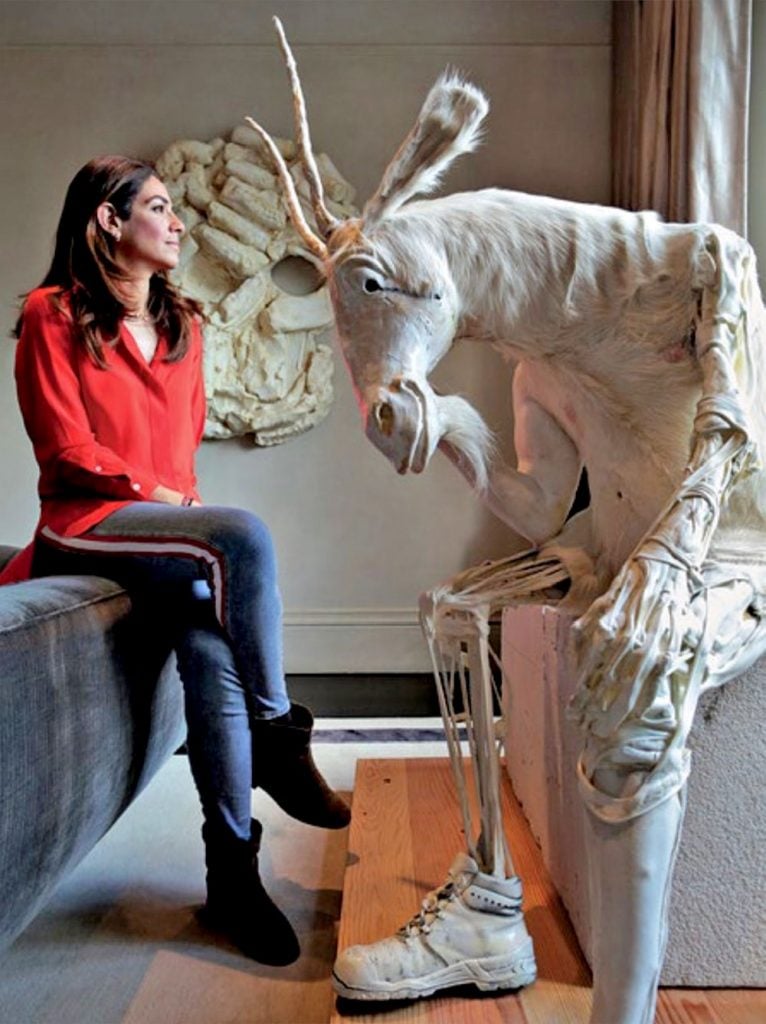
She's given her collection a name‚ the ISelf collection, which has been shown at Whitechapel Gallery in London.

Lee Carter

Born and raised in Lebanon, Maria Sukkar relocated to London with her husband, Malek, and their three children in 2004. Now, after two decades of collecting, they’ve earned a reputation as two of the most important collectors in the contemporary art world.
The couple has given their collection a name, ISelf, in which the full spectrum of human nature is explored—starting with the self, naturally. “The ISelf collection looks at identity,” Maria told Artnet News, “with particular reference to the human condition.” She explained the objective of the collection is to rigorously examine “themes of birth, death, sexuality, love, frailty, pain, and joy,” with a particular focus on women artists.
Established in 2009, ISelf was exhibited in a series of shows at London’s Whitechapel Gallery in 2017 and 2018, presenting artists who reference identity or who stage their own bodies into their works. The 25 pieces included Yayoi Kusama’s Infinity Nets YSOR (2011), an untitled Louise Bourgeois bronze, nude gouaches by Tracey Emin, Paloma Varga Weisz’s Bumped Body (2007), and self-portraits by Cindy Sherman and André Breton. Other artists featured in the four-part series included Cathy Wilkes, Linder, Raqs Media Collective, Maria Bartuszovà, Ruth Claxton, Gabriel Kuri, Nicola Tyson, Enrico David, and Alexandra Bircken.
All the while, Sukkar has remained a tireless champion of Lebanese artists, working with the Beirut Art Centre as well as the British Museum and Tate, where she co-chairs the Middle Eastern and North African Acquisitions Committee. In 2013, she facilitated the first international retrospective of Lebanese abstract artist Saloua Raouda Choucair.
We caught up with the art-world dynamo for a glimpse into how she views art, herself, and ISelf.
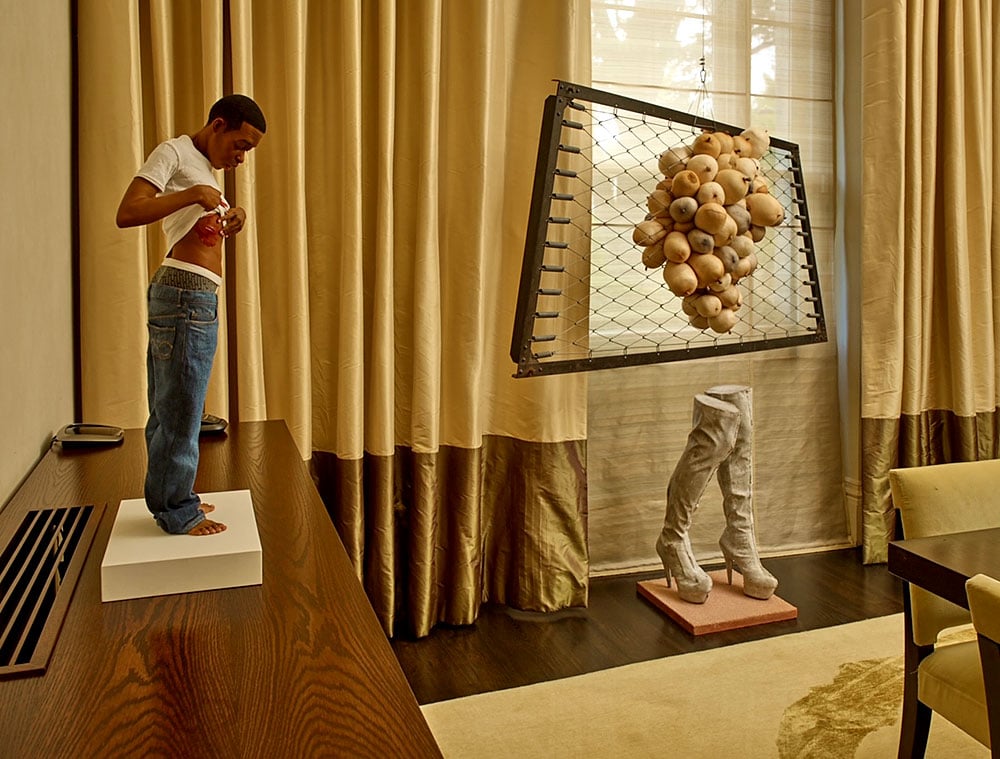
In her dining room, Sukkar displays (left) Ron Mueck’s Youth (2009) and (right) Sarah Lucas’s Nice Tits (2011). Courtesy of Maria Sukkar.
What was your first purchase?
Our first purchase was a pixelated sculpture by British artist Antony Gormley titled Extract. It’s the artist’s own body curled up in a fetal position and cast in small steel blocks. I remember how fascinated my husband and I were with the different geometrical facets of the work and its many changing angles.
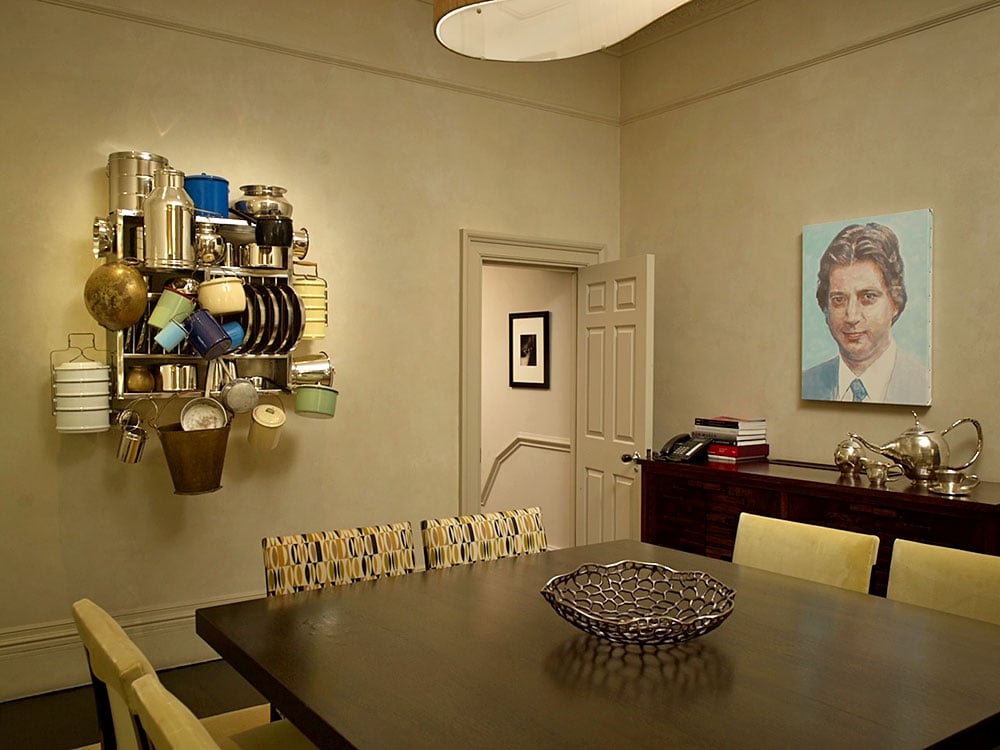
The kitchen features (left) Subodh Gupta’s Family Nest No 2 (2007) and (right) a painting by Luc Tuymans. Courtesy of Maria Sukkar.
What was your most recent purchase?
My most recent acquisition is a bronze sculpture by Vuslat Sabançi titled Courage. I fell in love with its unique form fearlessly projecting itself in the space around it. It’s quite an enigmatic work that is defying the current order surrounding it.
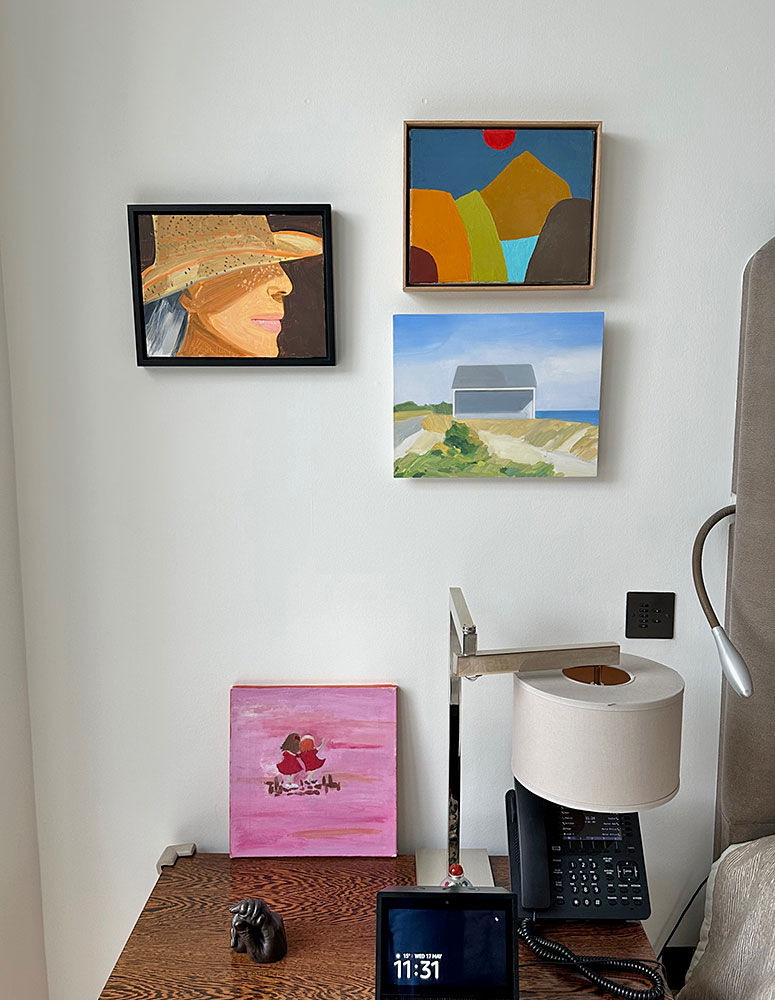
Clockwise from left: Alex Katz, Ada with Straw Hat (2010), Etel Adnan’s Untitled (1988), Maureen Gallace’s Blue Beach Shack (2005), and “a painting by my daughter when she was six years old.” Courtesy of Maria Sukkar.
Tell us about a favorite work in your collection.
That’s a difficult question to answer as I have many favorites. Each work has a story and a special significance. But if I were to choose one I would say it’s a small painting by Alex Katz called Ada with Straw Hat (2010). My husband gave me this work exactly 12 years ago. That year I couldn’t go with him to Art Basel because I had just given birth to our third child. So in breaking with tradition (and with my blessing) he went on his own and came back with a present. This beautiful work currently hangs above my bedside table next to Etel Adnan and Maureen Gallace’s paintings of structures in the landscape. Ada with Straw Hat brings so much light and happiness into my life.
Another favorite of mine is Pawel Althamer’s Self-Portrait as the Billy-Goat from 2011 (top image). It’s a goat representing the artist sitting in a melancholic pose in the pretense of Auguste Rodin’s famous The Thinker (1902).
Which works or artists are you hoping to add to your collection this year?
My wish list is ever-growing and a sneak preview would reveal a work by Lynette Yiadom-Boakye, a painting by modern Egyptian artist Gazbya Sirry, a figurative clay sculpture by Lebanese artist Ali Cherri, and a green-colored ceramic work by artist and friend Zein Daouk.
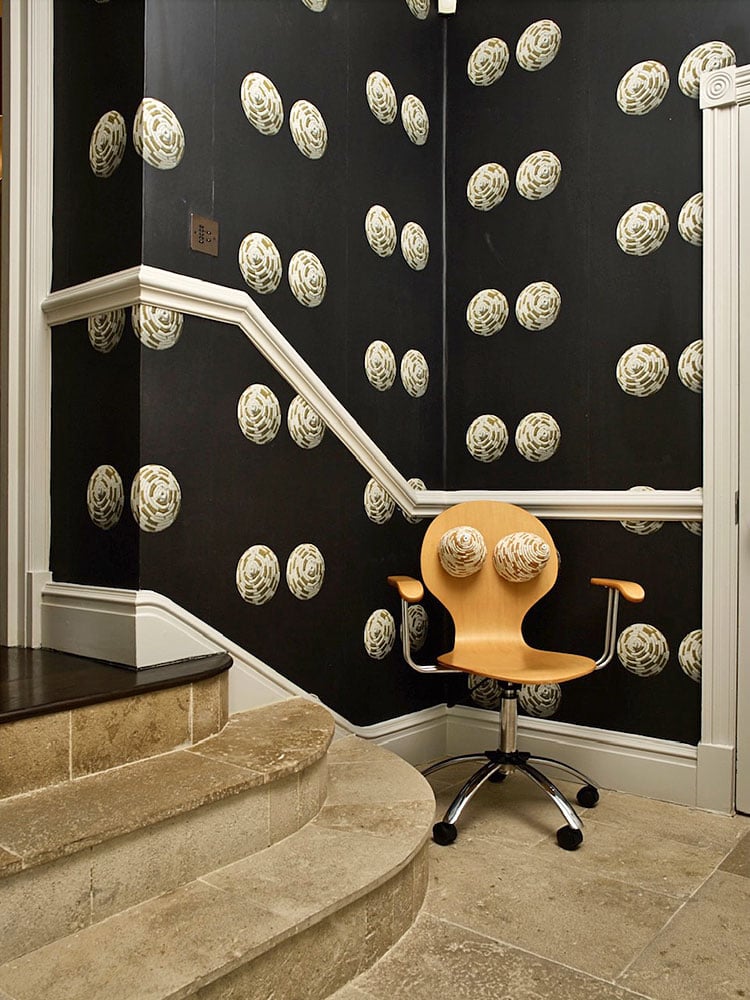
Sarah Lucas, Oral Gratification (2000). Courtesy of Maria Sukkar.
Where do you buy art most frequently?
I used to buy art mostly at art fairs. I have refined the process over the years and now I feel that I am in a constant state of research and discovery. I am always on the lookout for emerging talent and I come across the most unusual and interesting finds during collection visits, gallery tours, and my travels.
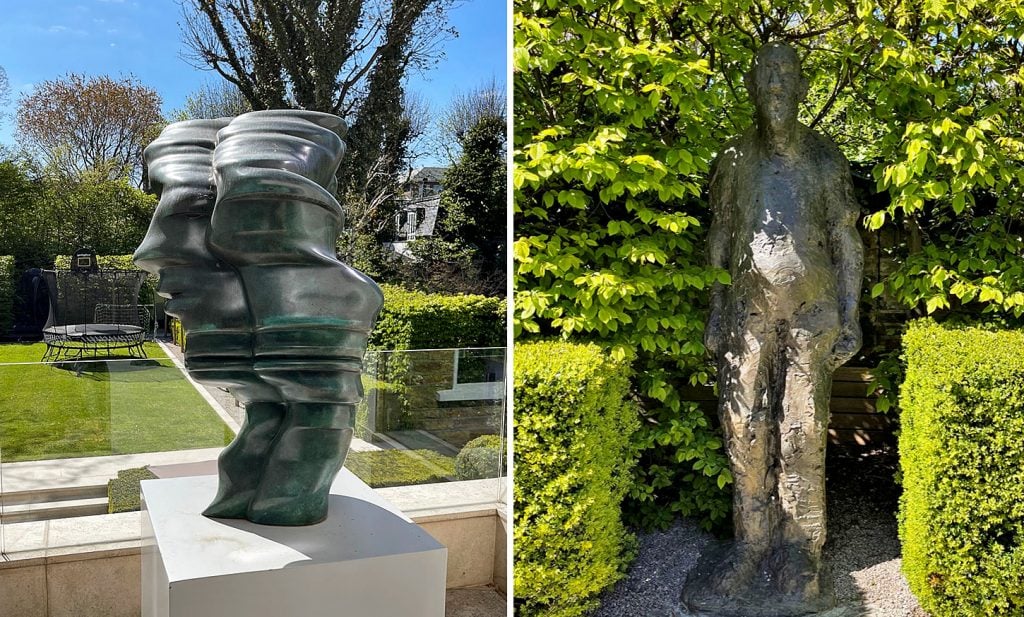
Sukkar has installed (left) Big Head Green (1992) by Tony Cragg and (right) Hans Josephson’s Untitled (2008) in her garden. Courtesy of Maria Sukkar.
Is there a work you regret purchasing?
Many years ago we bought an Anselm Kiefer work from his “Palmsonntag” series (2006). It is an incredibly large-scale multilayered painting and when we brought it to the house we couldn’t get it through the front door. We thought of every other possibility including dismantling the two terrace doors in an effort to bring it in but we failed miserably. This one-off incident happened at the beginning of our collecting journey and we learned a valuable lesson: always check the measurements of an artwork before acquiring it to prevent a similarly disappointing situation.
What work do you have hanging above your sofa? What about in your bathroom?
Above my sofa hangs a work by Maria Lassnig titled Adam and Eve with Apple (2003). It’s a very bold and expressive work where you can see Eve towering over Adam as they both hover in a moment of attraction. I often wonder what goes into Eve’s mind. The self-confidence that she conveys is really inspiring.
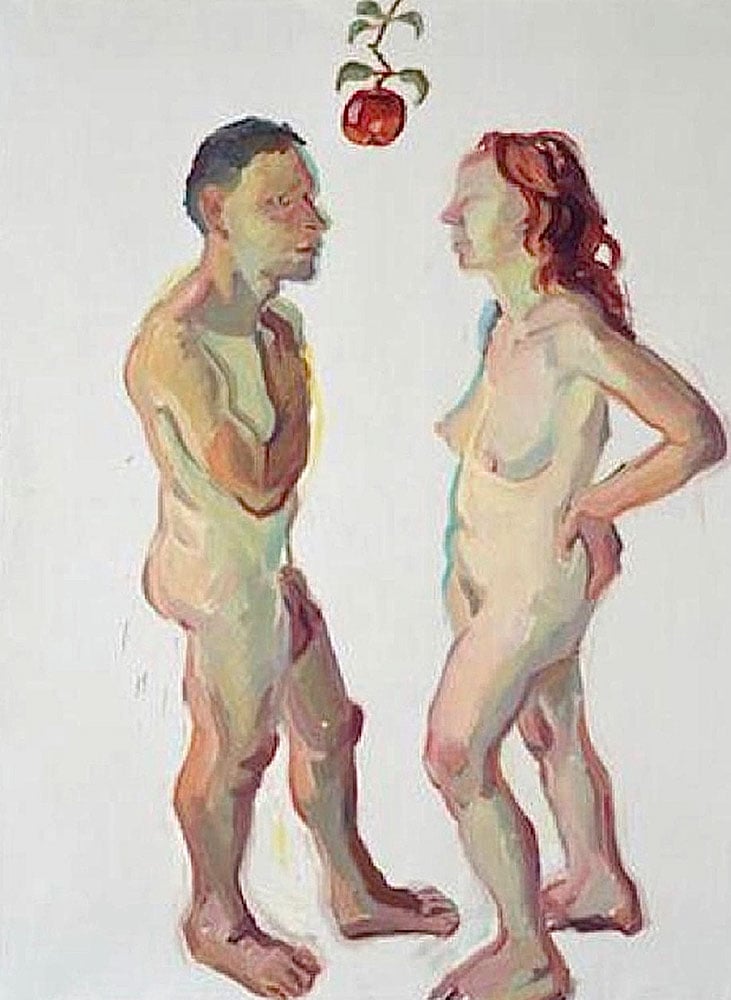
Maria Lassnig, Adam and Eve with Apple (2003). Courtesy of Maria Sukkar.
As for the bathroom, we have installed a few fun pieces in there: Gillian Carnegie’s Mabel (part of a series of her bum paintings), a Laura Lancaster work, Paul Lee’s Untitled (tambourine with lavender corner) (2010), and Boran Šarčević‘s hanging twig, Presence at Night (2008).
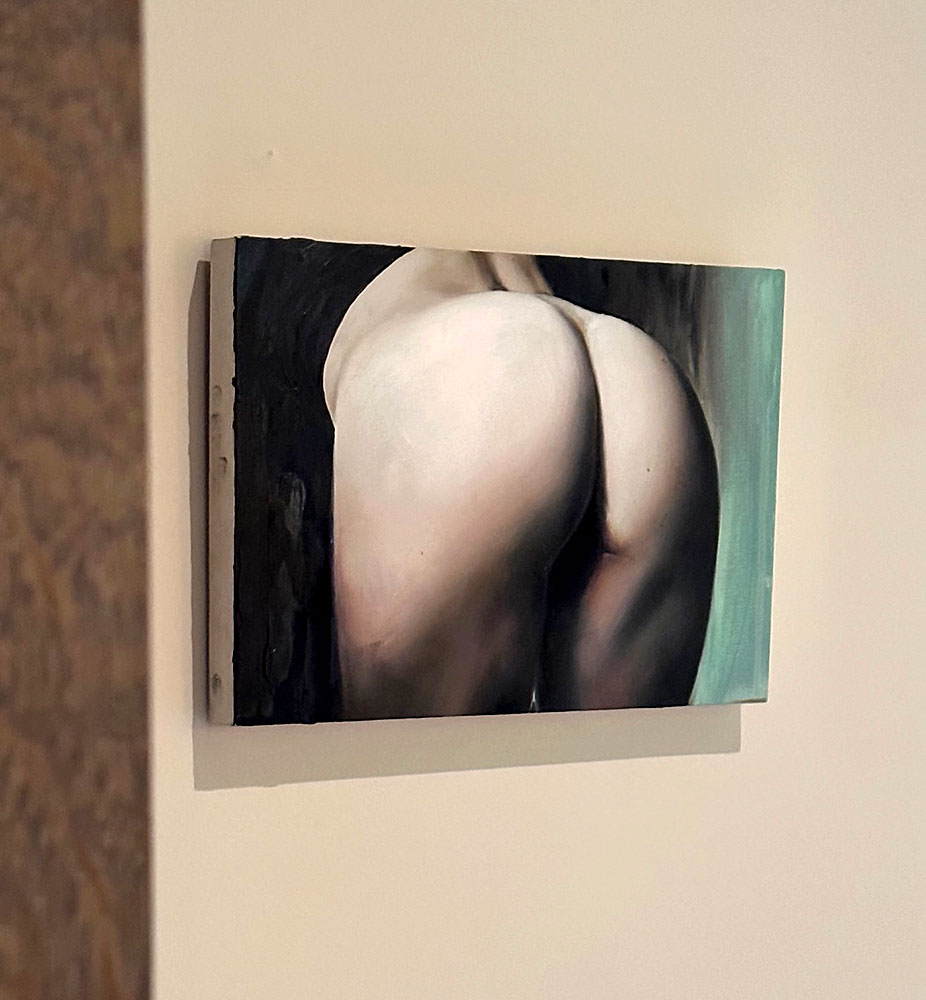
Gillian Carnegie, Mabel (1999). Courtesy of Maria Sukkar.
What is the most impractical work of art you own?
Well, as I think of impracticality with regards to artworks in the collection, a couple of pieces come to mind: a Damián Ortega massive hanging sphere (over two and a half meters in diameter) made up of colored glass, metal wire, red tezontle stone, and sandpaper titled Five Rings (Cinco Anillos) (1996) and a Karla Black hanging work made of polythene, plaster powder, powder paint, and thread. This piece is titled Easily Asked (2012). Both works are simply stunning but sadly still in storage as I haven’t figured out how and when I will have them installed at the house. They are fragile and very intricate to install but I am hoping that day will come soon!
What work do you wish you had bought when you had the chance?
The work that I wish I had bought a while back is a sculpture/lamp by Alina Szapoczinow. It’s a glossy resin cast of body parts featuring red lips and a melted head. The piece was very sensual and reflective, carrying so much pain and anxiety. It still haunts me to this day. The takeaway lesson? Always listen to your gut feeling, it never fails you.
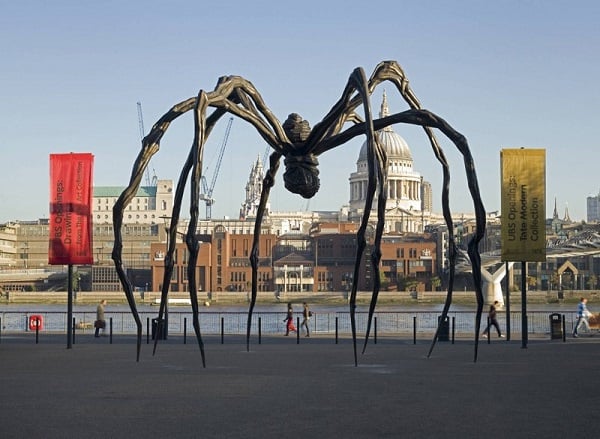
Louise Bourgeois, Maman (1999). Courtesy of Tate.
If you could steal one work of art without getting caught, what would it be?
The one work of art I would dream of owning but cannot contemplate stealing would be Maman, the giant spider work by Louise Bourgeois. At more than nine meters high, Maman was inspired by the artist’s own mother, it’s almost an homage to her. It symbolizes fertility, shelter, affection, and the nurturing home. Every detail in this work speaks to me—the slender elegant legs, the cage-like body, and the basket with eggs. They all convey a mix of vulnerability, strength and fear. Maman is indisputably the most magnificent work ever created by a female artist.